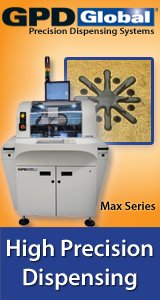Printed Circuit Board Assembly & PCB Design Forum
SMT electronics assembly manufacturing forum.
- SMTnet
- »
- Electronics Forum
- »
- Halogen-free Solder Reflow Quality Issues
Halogen-free Solder Reflow Quality Issues
Views: 8249
![]() I've recently pushed the company I work for to switch to a h...
- Aug 24, 2015
by
derrikf
I've recently pushed the company I work for to switch to a h...
- Aug 24, 2015
by
derrikf
![]()
![]()
![]() Your solder looks like it hasn't had time to reflow. Are`the...
- Aug 24, 2015
by
sarason
Your solder looks like it hasn't had time to reflow. Are`the...
- Aug 24, 2015
by
sarason
![]()
![]()
![]() Both pictures are from .031" FR4.
According to my MOLE it...
- Aug 25, 2015
by
derrikf
Both pictures are from .031" FR4.
According to my MOLE it...
- Aug 25, 2015
by
derrikf
![]()
![]()
![]() When I made my previous reply, I don't think I was very clea...
- Aug 29, 2015
by
sarason
When I made my previous reply, I don't think I was very clea...
- Aug 29, 2015
by
sarason
![]()
![]()
![]() And I might add the immortal words of Lord Kelvin
"To measu...
- Aug 29, 2015
by
sarason
And I might add the immortal words of Lord Kelvin
"To measu...
- Aug 29, 2015
by
sarason
![]()
![]()
![]() Maybe look at reducing the time above liquidus to @ 60 secon...
- Sep 04, 2015
by
Graham
Maybe look at reducing the time above liquidus to @ 60 secon...
- Sep 04, 2015
by
Graham
![]()
![]()
![]() Would be nice to see your profile, as I would imagine you co...
- Oct 01, 2015
by
BLT Circuit Services Ltd
Would be nice to see your profile, as I would imagine you co...
- Oct 01, 2015
by
BLT Circuit Services Ltd
![]()
![]()
![]() The following is representative of on-board temps of a FR4 a...
- Oct 02, 2015
by
derrikf
The following is representative of on-board temps of a FR4 a...
- Oct 02, 2015
by
derrikf
![]()
![]()
![]() After looking at your profile, some general thoughts....
...
- Oct 02, 2015
by
dyoungquist
After looking at your profile, some general thoughts....
...
- Oct 02, 2015
by
dyoungquist
![]()
![]()
![]() That's my main concern, the patchy/splotchy appearance doesn...
- Oct 28, 2015
by
derrikf
That's my main concern, the patchy/splotchy appearance doesn...
- Oct 28, 2015
by
derrikf
![]()
![]()
![]() They're probably 12 - 18 inches, maybe slightly longer.
...
- Nov 06, 2015
by
derrikf
They're probably 12 - 18 inches, maybe slightly longer.
...
- Nov 06, 2015
by
derrikf
![]()
![]()
![]() Also, for anyone who's taken an interest in this thread:
...
- Nov 06, 2015
by
derrikf
Also, for anyone who's taken an interest in this thread:
...
- Nov 06, 2015
by
derrikf
![]()
- SMTnet
- »
- Electronics Forum
- »
- Halogen-free Solder Reflow Quality Issues







